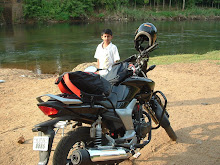
Type of Constructs as taught by Prof. Pawar and conflicts as interpreted by Prof. Shelly Jose
The building blocks of all theories are concepts. Concepts are defined before they are used in a theory or a debate. Thoughts or the history of thought is full of concepts that are combined and recombined in theories after theories. The theories climb up the ladder of abstraction. Myths such as the myth of creation are also in a way explanations or theories which hold good for some time until replaced by better ones. For instance the biblical myth of creation would date the universe to around 7000 BC but science would not agree. The theory most widely accepted is the big bang theory.
Did the creation myth serve any purpose? It did and it does even today. The same scientist may be a Christian as well as a scientist. How can this be? Can the big bang theory and the creation myth co exist? It does sometimes in the same mind. For that matter, can the corpuscular theory and the wave theory of light co exist? It does. In fact many phenomena of light are explained by one of them rather than the other. So both are accepted and not discarded. In that case why shouldn’t the creation myth and the big bang co exist in the same mind?
Similarly there can be different theories of say Psychology such as Psychoanalytic, Behavioural, Gestalt, Transactional analysis all of them framing the same phenomena in different ways. It is therefore necessary to talk about constructs to understand the co existence of multiple theories to explain phenomena. Science and religion are not really antagonistic.
Type 1 constructs are those that we can see / perceive. For example the table. There is nothing inherently tablish about the combination of words that make up t-a-b-l-e. But over a period of time the Anglo Saxons have been using that particular combination of letters and sounds to mean a flat top on top of four at least three legs. In so far as a trapezium is drawn with four lines downward at appropriate angles and distances would give one the idea of a table or the concept of table. That is to say the mental schema of the type one constructs are fairly agreed upon by almost the entire civilised world.
Type 2 constructs are slightly more complex. They are not seen but can be seen using other devices. Bacteria or red blood corpuscles are examples. They are classified separately since they are not seen without some aid. So with radio waves which are explained in terms of the electromagnetic spectrum whose existence is scientifically established.
Type 3 constructs are slightly more difficult. They are created socially. Democracy is a good example. The particular democracy may vary across the world. But it has its beginnings in the sense of equalness that human beings came to idealise in the march of civilization. Without a sense of democracy there can be a vague sense of injustice, and rancour but no idea of say rights. And without rights there cannot be a sense of duty, both type 3 constructs themselves. As civilisation progressed things became more abstract. The sense of injustice was sort of sought to be resolved through the magna carta. And the ideas of equality, fraternity and liberty flew throughout Europe and the rest of the world. The Americans borrowed and adapted a great deal of it. One by one most of the world turned to democracy and is today implicitly assumed to be a universal value.
Can we see democracy? No. We can only see its indications. A protest, strike, ballot, elections and so on...
Type 4 constructs are even more removed from the world outside. They do have existence only in their own framework. For instance Psychoanalytic theory encompasses id, ego and super ego. They don’t mean anything or they do mean other things elsewhere or in isolation from the framework..
I think of all the four types of constructs the most difficult from a worldly and not academic point is the type three. Type one is fairly seen and agreed upon and is generally in the empirical domain. Type two and four are mostly engaged in by people specialized in certain domains. Type 3 is out there for everyone to interpret and misinterpret and squabble on. There is this one line in 'Black Hawk Down' a movie set in real life Somalian conflict. ‘We don’t want your democracy’. Similarly many other voices of dislike of the western style of democracy are not difficult to find.
Type 4 constructs are even more removed from the world outside. They do have existence only in their own framework. For instance Psychoanalytic theory encompasses id, ego and super ego. They don’t mean anything or they do mean other things elsewhere or in isolation from the framework..
I think of all the four types of constructs the most difficult from a worldly and not academic point is the type three. Type one is fairly seen and agreed upon and is generally in the empirical domain. Type two and four are mostly engaged in by people specialized in certain domains. Type 3 is out there for everyone to interpret and misinterpret and squabble on. There is this one line in 'Black Hawk Down' a movie set in real life Somalian conflict. ‘We don’t want your democracy’. Similarly many other voices of dislike of the western style of democracy are not difficult to find.





















No comments:
Post a Comment